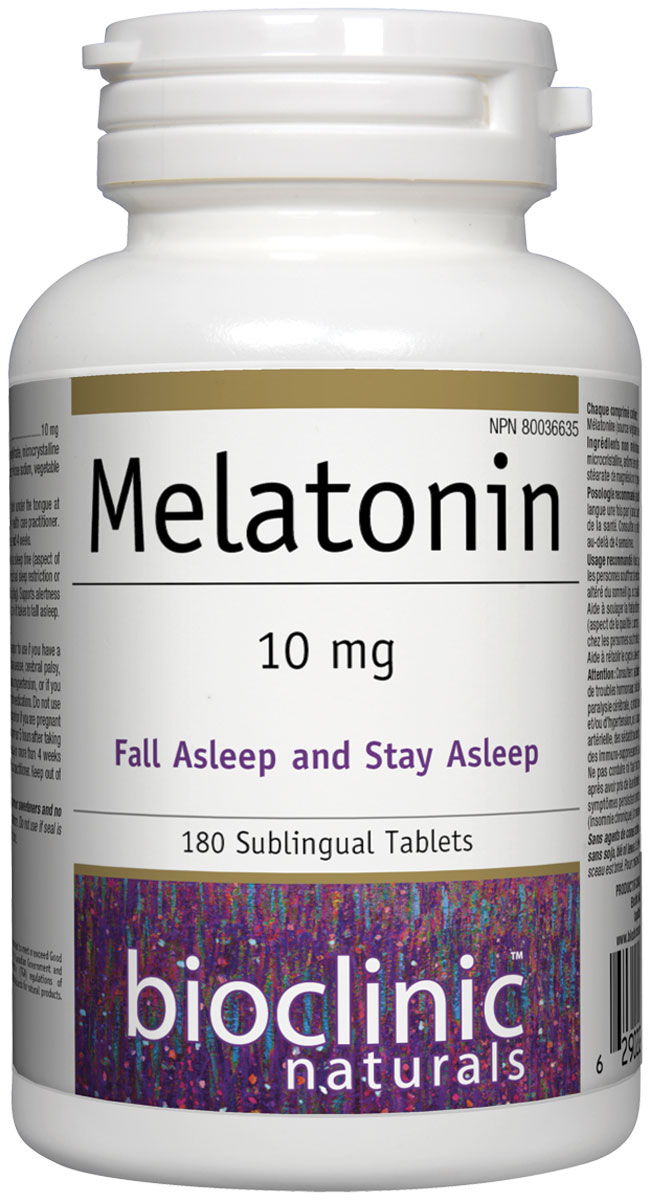
10 mg
10 mg
180 Sublingual Tablets ( SKU: 9286, NPN: 80036635 )
Medicinal Ingredients
| Each Sublingual Tablet Contains: | |
| Melatonin (vegetarian source) | 10 mg |
Non-Medicinal Ingredients
Lactose monohydrate, microcrystalline cellulose, natural peppermint flavour, croscarmellose sodium, vegetable grade magnesium stearate (lubricant).
Dosage:
Recommended Adult Dose: Do not drive or use machinery for 5 hours after taking melatonin . Dissolve 1 tablet under the tongue at bedtime once per day or as directed by a health care practitioner. Consult a health care practitioner for use beyond 4 weeks.
Warnings:
Consumption with alcohol, other medications or natural health products with sedative properties is not recommended. Consult a health care practitioner prior to use if you have one of the following conditions: asthma, cardiovascular disease, chronic kidney disease, depression, diabetes or hypoglycaemia, hormonal disorder, immune system disease, liver disease, migraine, or seizure disorders, or if you are taking one of the following medications: anticoagulant, anticonvulsant, blood pressure medications, immunosuppressive medications, sedative, hypnotic or psychotropic medications, or steroids. Do not use if you are pregnant or breastfeeding. Mild gastrointestinal symptoms (nausea, vomiting, or cramping) and rare allergic reactions have been known to occur, in which case discontinue use. If symptoms persist continuously for more than 4 weeks (chronic insomnia), consult your health care practitioner. Keep out of reach of children.
Allergens:
Contains no artificial colours, preservatives, or sweeteners; no starch, sugar, wheat, gluten, yeast, soy, egg, fish, shellfish, salt, tree nuts, or GMOs. Suitable for vegetarians. Sealed for your protection. Do not use if seal is broken. For freshness, store in a cool, dry place.
